Half a nautical mile off Thieves Bay, Scotti Griffin pops the aluminum-hull patrol boat into neutral.
We're at the edge of a seven-kilometre-long no-go zone off the southwest coast of Pender Island. It's part of a raft of sanctuary areas off the coast of British Columbia designed to give southern resident killer whales space to travel, socialize and hunt for salmon.
Griffin is part of a federal unit of fisheries officers that effectively work as whale bodyguards — patrolling the waters of the Salish Sea to protect the cetaceans from collisions with boats and the underwater noises they spit out.
Because killer whales use echolocation to navigate and find their food, the blaring sounds of a boat engine can throw off the senses they rely on to survive.
Such acoustic disturbances are one of three primary threats facing the southern residents. Others include contamination from toxins and pollution and dwindling chinook salmon stocks — the species' primary food source.
Ranging from California to B.C., the southern residents' numbers have stagnated at 73 individuals in recent years. The most recent analysis from Fisheries and Oceans Canada shows they face a 24 per cent chance of functional extinction as early as 75 years from now.
So when a mast comes into view off the stern, everyone stops what they're doing.
"As soon as you pull out your lunch..." Griffin says, whipping the boat around and putting us on an intercept course. "Sailboats are so quiet. They sneak up on you."
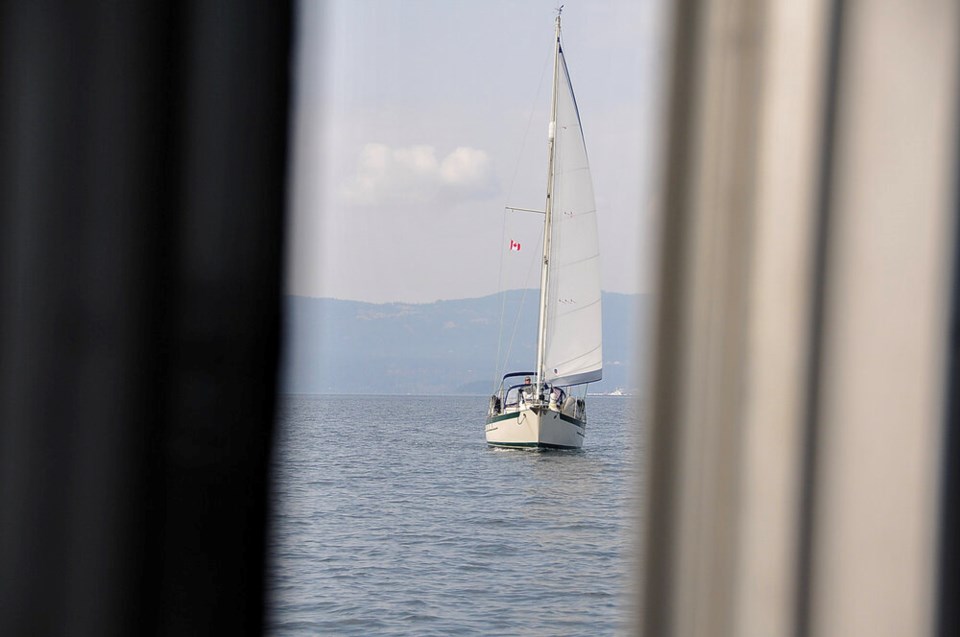
We head off the vessel, escort it out of the sanctuary zone, and come alongside for what former Annacis Island detachment commander Derek Chung describes as "education."
Chung lectures the captain, telling him why the area is closed and why it matters to the whales' survival. He then hands over a series of maps and regulations so it won't happen again.
At least, that's the hope.
Over the next 20 minutes, the unit would intercept and escort three boats out of the sanctuary zone. When questioned, the two American and one Canadian captain say they never knew it existed.
Pandemic driving ignorance around whale regulations
Boaters ignorant of the federal whale regulations have been on the rise across southern B.C. waters. Since the start of the pandemic, many new boaters took to the water at a time the whale unit was barred from visiting big events like the Seattle Boat Show, where officers used to go to get the word out.
When the Canada-U.S. border opened last year, a flood of Americans started exploring the province's waterways, many unaware of federal laws around whales.
"It's kind of like police sitting in a school zone," Chung says, spotting another boat on the onboard radar.
Unlike police, these fisheries officers don't have the power to hand out fines for breaches of federal regulations protecting marine mammals. Instead, they have to undergo often tortuous investigations, collecting eyewitness statements and reams of evidence.
In the most desperate circumstances, the whale protection unit — which, like all fisheries officers, carry handguns on their belts — might jump on a loudspeaker to warn off approaching vessels, flash a blue emergency light or detain and arrest a scofflaw crew.
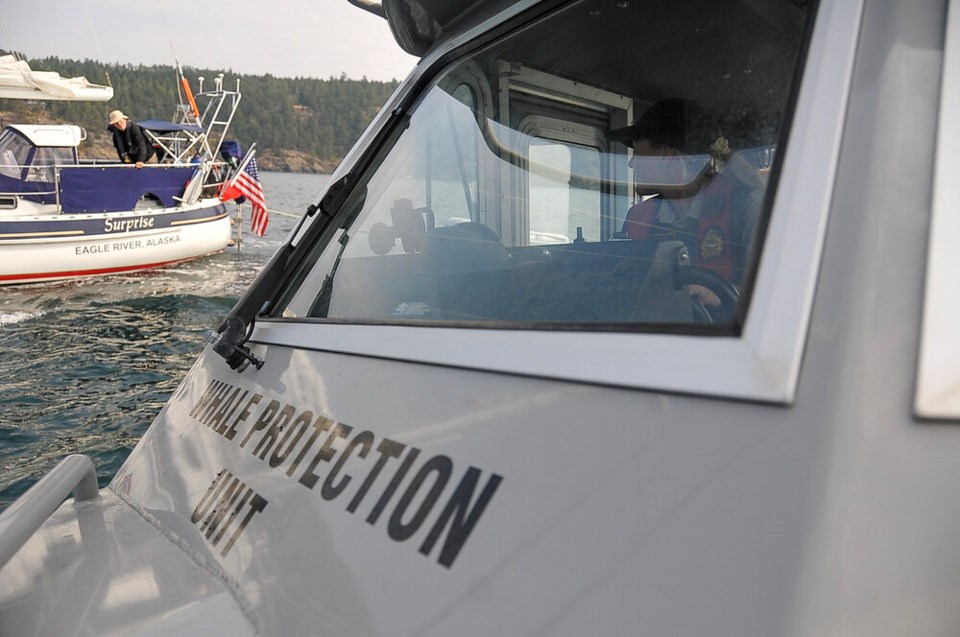
Conviction in a provincial court, if it happens, can take years, as evidenced by a record $12,000 penalty handed out to a commercial diver last month, more than two years after he "leap-frogged" a pod of seven killer whales and dove into the water to get a closer look.
These fisheries officers often act as friendly neighbourhood whale police, preempting bad behaviour and keeping humans and wildlife in their respective lanes.
With detachments out of Victoria and Annacis Island in Delta, seven fisheries officers are responsible for protecting a variety of marine mammals across a massive tract of ocean, extending from Campbell River in the north, around the southern tip of Vancouver Island and up the west coast past Ucluelet.
The two units must travel roughly 200 kilometres to reach their patrol borders. Often, says Griffin, it can take two hours after they receive a report to arrive on the scene.
"We have nearly seven-day-a-week coverage. But our area is quite large and so to be on top of whales is a challenging thing. They move around," she says.
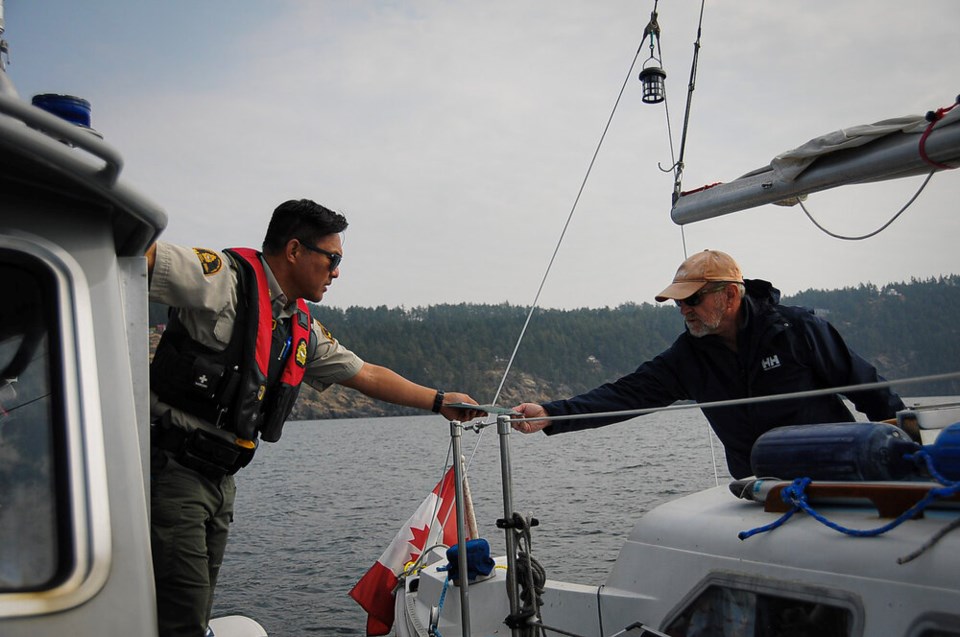
Humpback on the horizon
We pull into Miner's Bay on Mayne Island, spreading out lunch on a picnic table not far from where Griffin spent her childhood at her grandfather's cabin.
"I used to see the killer whales on the ferry," she says. "It was a part of my life."
All three fisheries officers onboard said they got into the job because they loved being outside and wanted to do something to protect the natural world. The youngest officer, Griffin, got the job two years ago and went directly into the Whale Protection Unit.
She says it was like hitting the jackpot.
"It's a lottery job," she says. "Look at us today. We're out here on a boat protecting whales!"
The officers trade stories about common roadblocks with the BC Conservation Officer Service in the Interior or a recent trip to Haida Gwaii where "there's still a lot of abalone poaching going on."
On the way back to the boat, Griffin smiles, gleefully pointing to a bumper sticker advertising a local whale protection network.
"We're always trying to get the word out," she says.
There are signs their push to educate boaters is paying off.
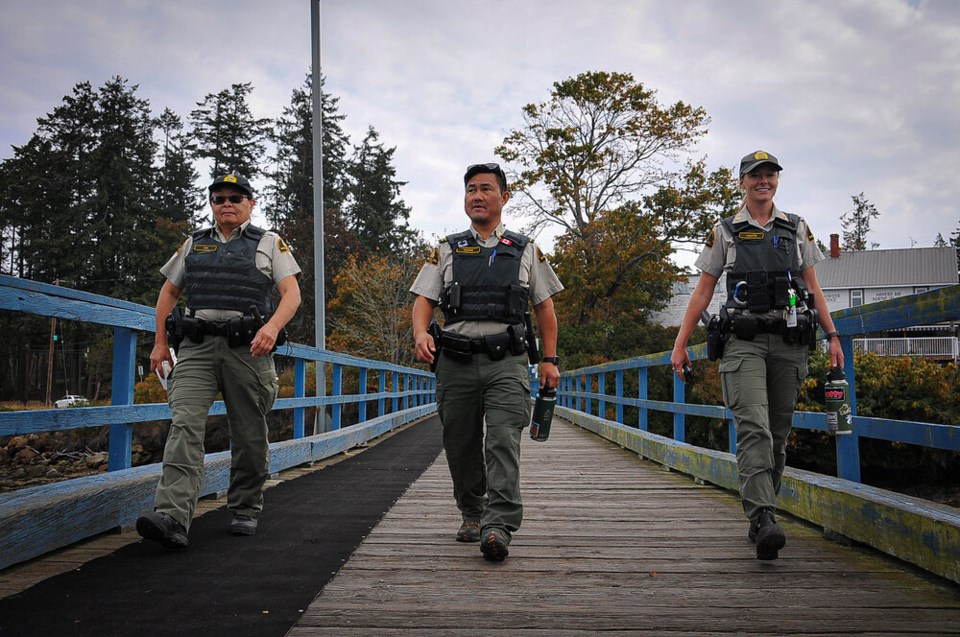
Chung says the team receives roughly 800 reports of people harassing or entangling themselves with marine mammals every year. Chung points to that flurry of information when he says people are increasingly learning what you can and can't do around whales.
Today, however, we have only seen a pair of harbour porpoises dancing off the bow as we crossed the Strait of Georgia.
That is until a ping pops up on an app known as the Whale Report Alert System, a self-reporting tool that allows boaters to call in sightings.
Someone has spotted a humpback off Thetis Island.
We speed north through Active Pass, where powerful currents and a confluence of whale and boat traffic come together to make it one of the most dangerous corridors for the southern resident whales.
Running up the coast of Galiano Island, we pass cormorant nests high up on seaside cliffs and small rocky islands, often sunbathing hotspots for seals and sea lions.
Sitting on the boat's bow, fisheries officer Fay Gin — on loan for the day from Steveston's general duty detachment — looks down at the water.
"It's like glass," she says.
Suddenly, the silence is broken when a rush of air bursts from underwater a few hundred metres off port. A humpback fin breaks the surface, and with a graceful flick, the cetacean vaults its tail into the air before slipping out of sight.
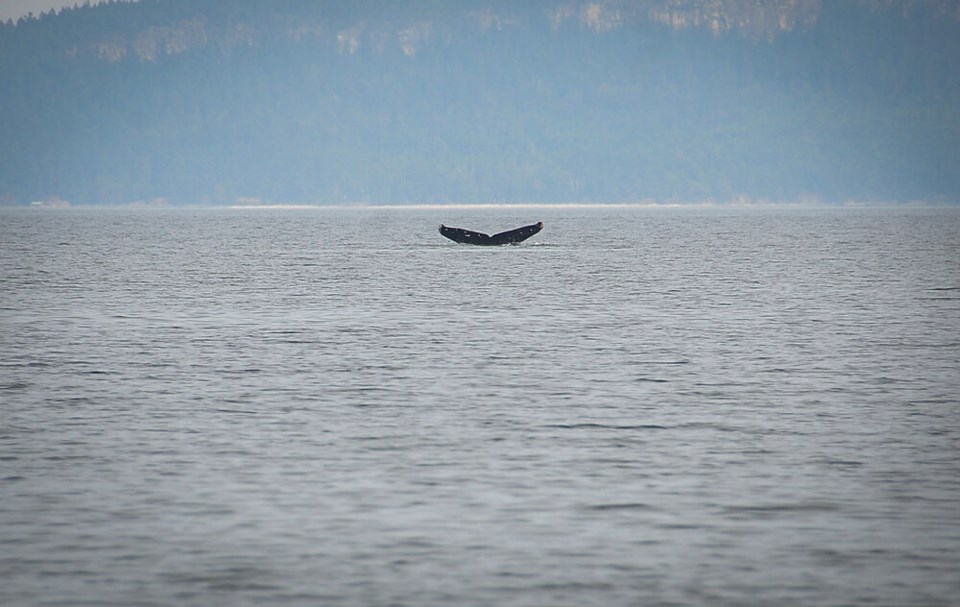
While the southern resident population is almost identical to the number of whales left in the wild when live captures were halted in 1974, humpbacks have made a massive comeback to B.C.'s waters.
Decades of whaling humpbacks ended in 1965. Since then, their populations have started to rebound, prompting the federal government to downgrade the species status from "Threatened" in B.C. to one of "Special Concern."
In 2004, 42 humpbacks were identified in one corner of B.C.s north coast region; by 2019, the number of individuals spotted in the area had climbed to 426, according to the North Coast Cetacean Society.
"We have more humpbacks coming back every year than we have in decades," said Griffin.
The whales in some areas are so plentiful that Griffin and her colleagues have come to call a stretch of water near Campbell River "whale soup."
Despite the optimism, the humpback's return to B.C. also presents some unique problems for the Whale Protection Unit.
Unlike killer whales, humpbacks don't echolocate. That makes it hard for them to pinpoint the location of a boat or, worse, a propeller.
And from a human perspective, even veteran boaters aren't used to the animals, which can often look like a log bobbing on the surface.
In 2021, a crew from Straitwatch — a marine mammal monitoring and education program — photographed a humpback that had never been spotted in B.C. A couple of weeks later, before they could even name it, the whale had propeller marks from two different boats.
Griffin angled the boat to intercept the first of two yachts motoring into the humpback's path.
"If you hit them, it's devastating," she says.
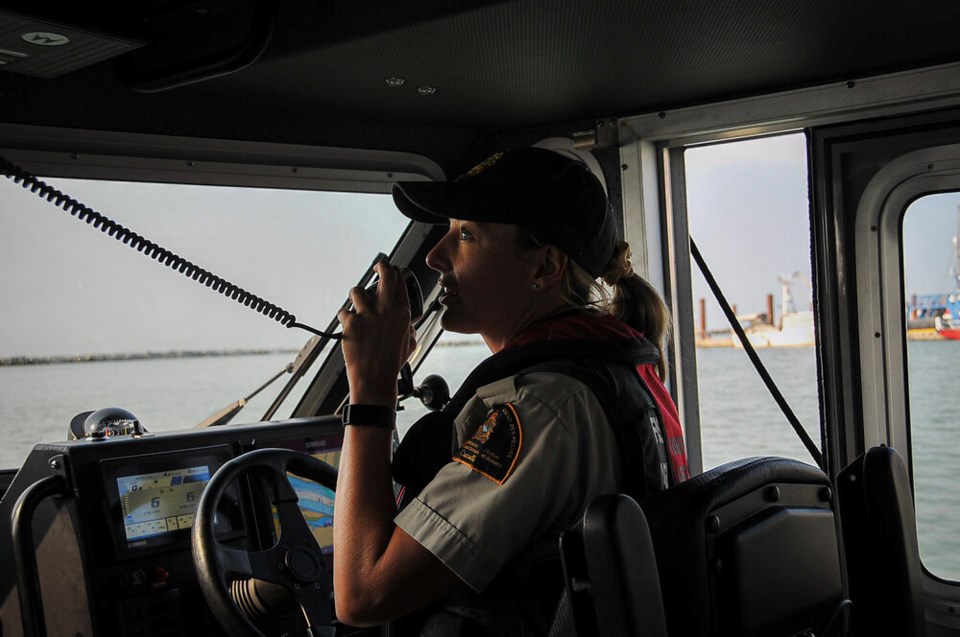
Eyes on the water
The Whale Protection Unit's work wouldn't be possible without a vast monitoring network.
The whale unit works closely with the Canadian Coast Guard's Marine Mammal Desk, which reports sightings and advises vessels to avoid whales in their path.
Meanwhile, the Vancouver Fraser Port Authority runs the ECHO program, which asks larger vessels to keep underwater noise at a minimum by slowing down and keeping their distance from whales where their foraging areas intersect with shipping lanes.
And from the air, Transport Canada's National Aerial Surveillance Program relays information to the Whale Protection Unit.
Researchers with DFO are also working on a system of hydrophones that can trace whales as they move around the Salish Sea.
"We're trying to get to the point where we can know what kind of whales they are, whether they're humpback, killer of some kind of other whale," said Chung. "We're not quite at that stage yet."
Until then, the unit relies on human eyes. Groups like Straitwatch send out boats almost every day in the summer to track whales and the boats in their way.
Straitwatch and the Whale Protection Unit often work closely together. But that hasn't stopped the non-profit from criticizing the government agency.
In a 2021 report, Straitwatch coordinator Emily Perkovic found that Canadian enforcement around southern resident killer whale buffer zones was far below U.S. levels.
Washington State Fish & Wildlife officers were present during violations of whale buffer zones roughly 20 per cent of the time since 2019, she wrote. In Canada, the presence of law enforcement over that period never climbed past two per cent.
"In the U.S., there's just there's more boats and more people and more resources," Perkovic later told Glacier Media while on patrol. In Canada, "there's just never enough eyes on the water."
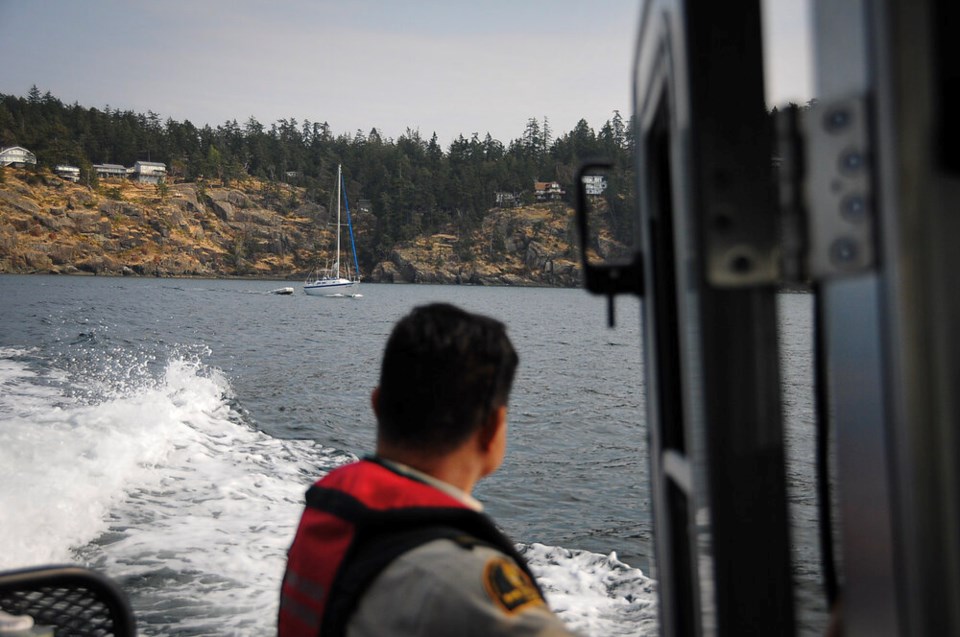
At the same time, Perkovic sympathizes with the officers of the Whale Protection Unit.
U.S. Fish & Wildlife officers get help from government agencies, like the National Oceanic and Atmospheric Administration. In Canada, Perkovic says everything — from deterring boaters on the water to gathering incident reports, tracking people down and getting witness statements — falls on seven fisheries officers from the Whale Protection Unit.
And while DFO's general duty detachments support the whale-focused unit, Perkovic says there have been several incidents where the general duty officers might get another call about people harvesting shellfish in a closed area. A potential public health threat, they would quickly pull up and leave, she said.
The lack of presence is unfortunate, says Perkovic, because when the unit is around, Straitwatch has observed an immediate effect. Private boaters are often on their best behaviour when officers are nearby and can throw on their lights and sirens, she says.
"The team from Delta having to cover the entirety of the Vancouver area, the Gulf Islands, and then all the way up to Campbell River? Like one boat can't do that effectively," says Perkovic.
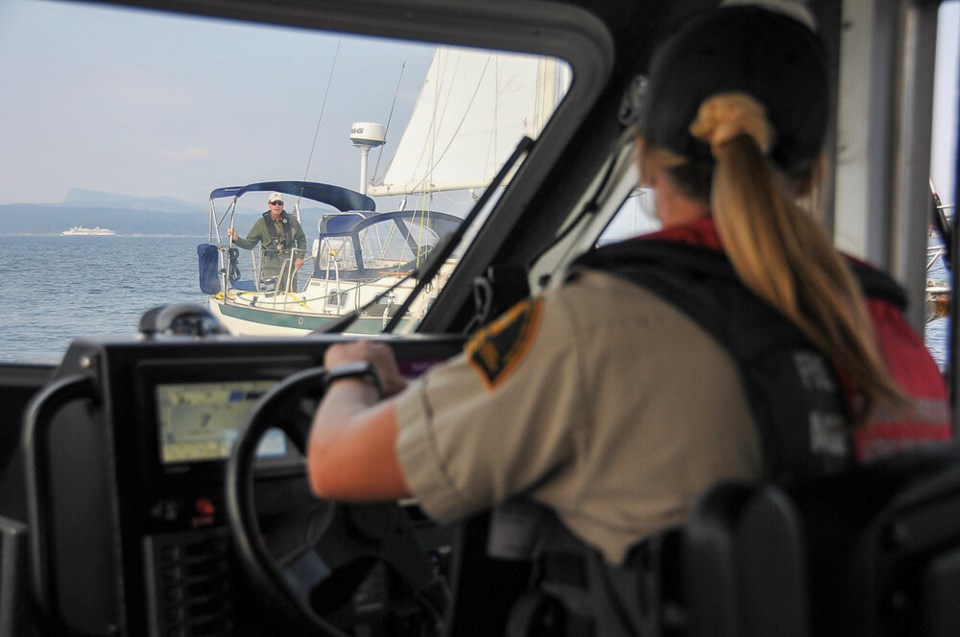
Solutions require Ottawa to step up
After six hours on the water, the whale patrol boat nears the mouth of the Fraser River. Scores of fishing trollers and seine purse boats emerge from the smoky horizon. Closer to shore, the water is dotted with speed boats — recreational fishers taking advantage of a rare opening in the sockeye salmon fishery.
With the Steveston wharf in sight, this reporter gets a phone call from a colleague: several people spotted a speed boat harassing a pod of transient whales near Campbell River.
The reports had come in two days earlier, but the Whale Protection Unit had been so busy out on the water that the officers hadn't had time to investigate yet.
The incident is symptomatic of an understaffed unit, said Perkovic, who was later reached over the phone.
Perkovic says the Whale Protection Unit needs to triple, if not quadruple, in size to effectively manage such a vast area of ocean.
"Maybe you put a team in Victoria Harbour, in Sooke or out in Port Renfrew to have a little more coverage out that way," she said, adding that even a seasonal expansion or more training for general duty staff would help.
Some solutions to ramp up protection for cetaceans in the Salish Sea are obvious; some have already proven to work south of the border, says Chung.
Shut down Active Pass to whale watching, and you take one more pressure off one of the busiest marine channels in the province. Now when a ferry, tug boat and throng of boaters go through, people don't have a chance to get out of the way, the fisheries officers told Glacier Media.
As Chung put it: "It's a bottleneck."
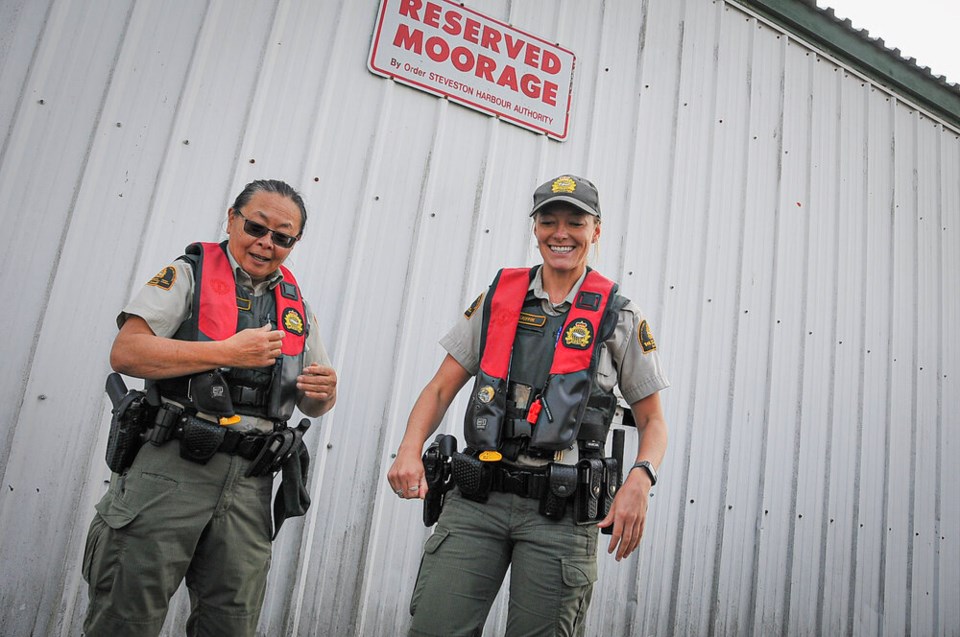
Perkovic and Chung agree whales would benefit from a strict permit system for whale watching outfits, like the one in Washington State.
One of the biggest lessons fisheries officers have learned from their U.S. counterparts, agree Chung and Perkovic, would be to give the unit the ability to hand out tickets instead of bringing cases on the long and often laborious path through the provincial court system.
"We're still catching up to where they are in Washington," says Chung.
"We want to push that message up through management, so eventually it will fall on the ears of the regulators in Ottawa — the people who actually have the power to change legislation."



